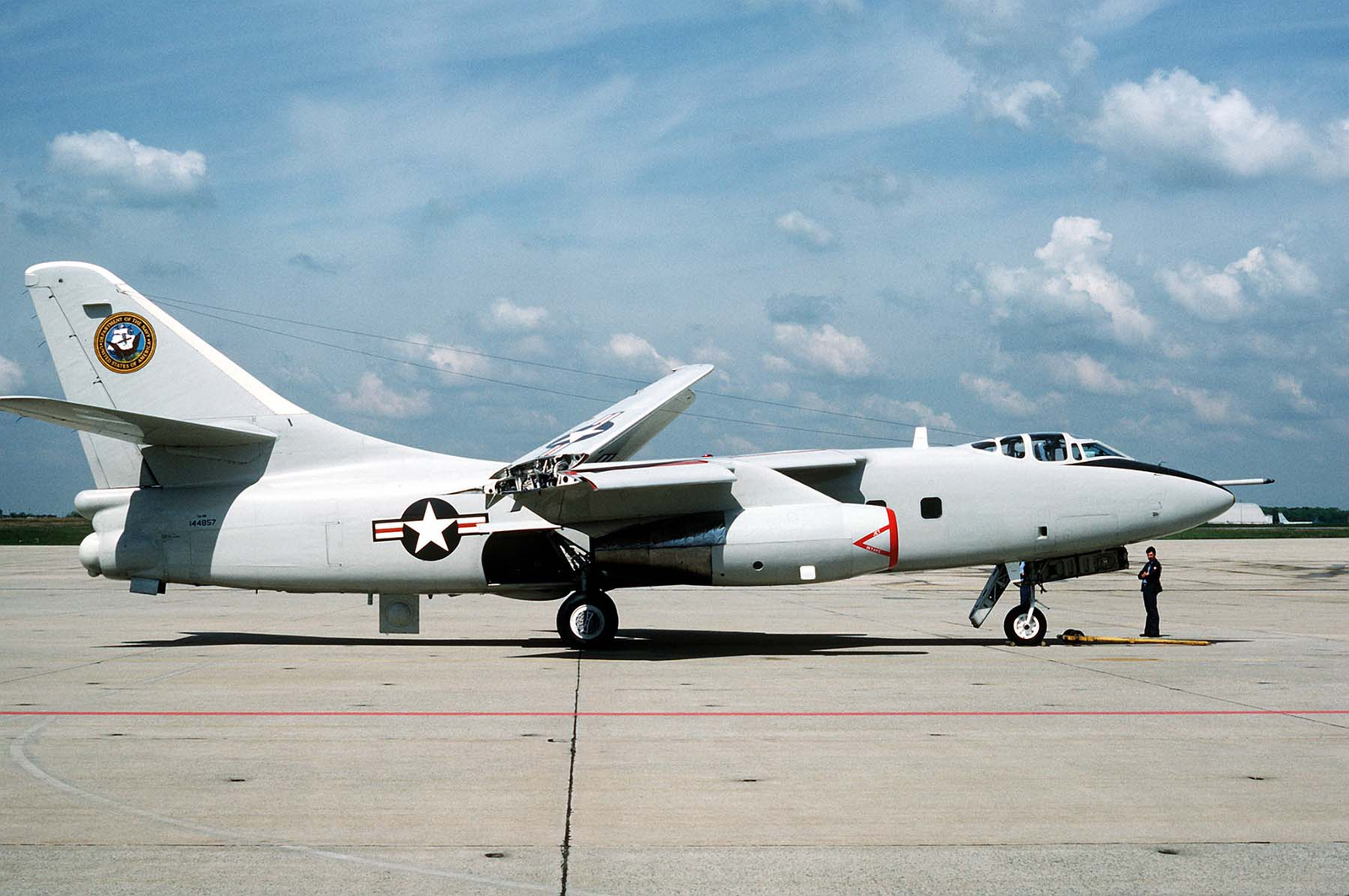
If you ever asked pilots in the Navy which aircraft inspired respect above all others, the Douglas A-3 Skywarrior would be near the top of their list. Dubbed “The Whale” by the crews who flew it, this large Cold War-era jet loomed over nearly every other aircraft on the carrier deck. First flying in 1952, it showed itself to be capable of a wide range of missions. It might carry nuclear bombs, obtain vital reconnaissance, jam the electronics of an enemy, and most notably, be used as a flying gas station that extended the range of fighters while returning thousands of pilots home safely.

The A-3 resulted from post-World War II nuclear fears. The Navy required a long-range jet aircraft that could be launched from a carrier and attack deep into enemy lands with nuclear weapons. Douglas Aircraft, designed by the genius Ed Heinemann, responded to the challenge with an aircraft that stretched the boundaries of carrier flight.

It was outfitted by engineers with tricycle landing gear to stabilize potentially hazardous takeoffs and landings on a rolling deck, fitted with folding high-mounted wings to minimize storage space in jammed hangars, and equipped with two massive Pratt & Whitney J57 turbojets to deliver the range required for long-duration missions.

The cockpit was roomy enough but cramped, with pilot and bombardier/navigator seated beside each other and a third crewman sitting aft to handle defensive equipment. In a weight-saving move that generated black humor among crews, no ejection seats were fitted, resulting in the sick joke that “A3D” stood for “All Three Dead.”

The Skywarrior entered active service in 1956, superseding the AJ Savage as the Navy’s nuclear attack platform. But with the advent of submarine-launched ballistic missiles, the nuclear mission was soon obsolescent. Far from being pulled from service early, the Whale evolved. Its huge bomb bay, tough construction, and long range made it well-suited to a host of other missions, such as electronic warfare, reconnaissance, and air refueling.

It was during the Vietnam War that the A-3 gained legendary status. While some planes made bombing runs, it was the tanker versions—the KA-3B and EKA-3B—that proved to be lifelines. They fueled up strike packages on their way to missions, hung around contested airspace to provide help as needed, and even brought back damaged planes to the carrier.

Heroic feats were commonplace. On 18 July 1967, Commander Tom Maxwell made a deep penetration into enemy territory under intense fire to top up Lt. Commander Dick Schaffert’s low-flying F-8 Crusader, guiding it home safely. It is estimated that Skywarrior tankers saved up to 700 Navy and Marine aircraft during the war.

More than 282 Skywarriors were constructed in several variants. The backbone was provided by the A-3B with improved engines and avionics, the KA-3B concentrating on refueling, and the EKA-3B blending refueling with electronic jamming. RA-3B conducted reconnaissance operations, and the EA-3B became an international standard of electronic intelligence operations, even being assigned flights in Operation Desert Storm. The U.S. Air Force also used the design to produce the B-66 Destroyer for ground attack, demonstrating the versatility of the airframe.

Piloting an aircraft of this size off a carrier deck was never simple. The Skywarrior set records for the heaviest catapult shots, but its size gave little leeway for mistakes. Almost 42 percent of all A-3s were lost in accidents or battle, and the lack of ejection seats made each flight a dangerous risk. Yet its crews developed a reputation for outstanding proficiency, unshakable discipline, and life-saving commitment.

By the early 1990s, the specialized aircraft had taken over the Skywarrior’s functions, and the Navy decommissioned the last planes in September 1991. But the Whale’s legacy lives on. Museum exhibits keep its memory alive, reminding us that occasionally the biggest bird on a carrier deck wasn’t a fighter, but the one that kept the fighters flying and got them back home.

The history of the A-3 Skywarrior is one of adaptability, unassuming heroism, and half a century of unparalleled versatility. Though never seeking glory in battle, it defined the path of naval aviation and stands as a testimony to innovation and perseverance at sea.
